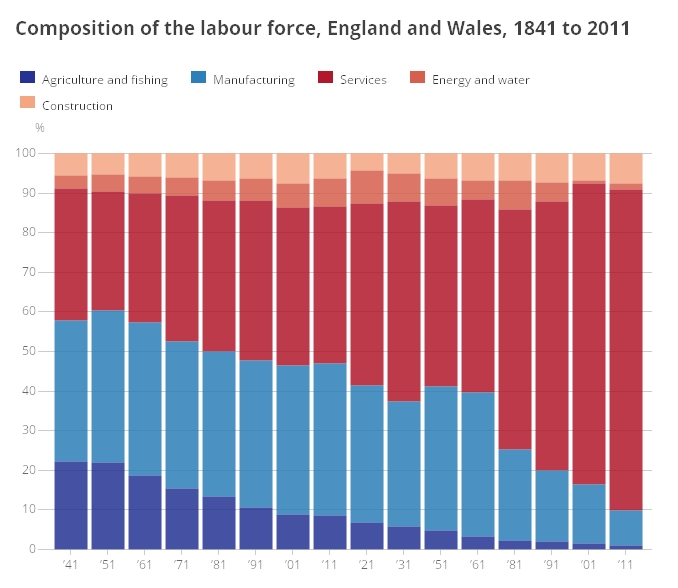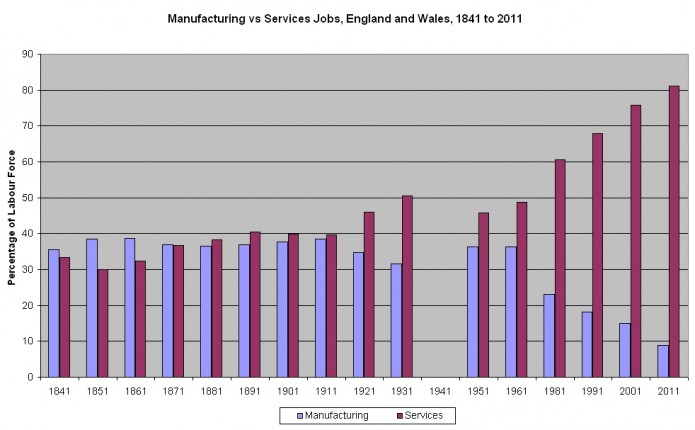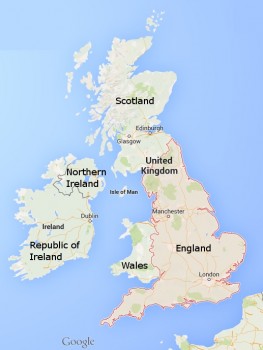Much ado is made these days about the demise of the manufacturing jobs and the rise of the service industry — in both the US and the UK — so much so that I always believed that the factory jobs were once the majority of the jobs out there (again, in both countries). I’ve just found this tidbit in an infographic from the ONS ((the Office for National Statistics, the government body charged with compiling statistics for England and Wales — Scotland deals with its own, and Northern Ireland seems to just be ignored most of the time)) , which has put that belief into a tailspin:

Source: ONS
Apparently, starting in 1841, right smack in the middle of the Industrial Revolution’s hey day, the service industry jobs were just about neck and neck with the manufacturing jobs! Actually, it’s harder to see in that graphic because of the decline in agriculture & fishing jobs, so here – I’ve pulled from the data they’ve made available to create this:

From ONS data
Indeed, it wasn’t until 1921 that the census picked up marked differences in these two sectors, in England and Wales. Of course, today’s situation is a drastic difference over, say, the 1950s and 1960s, to be sure. But it was never inverted from what it is today, with factory jobs outstripping service jobs massively. Interesting.

